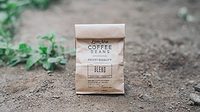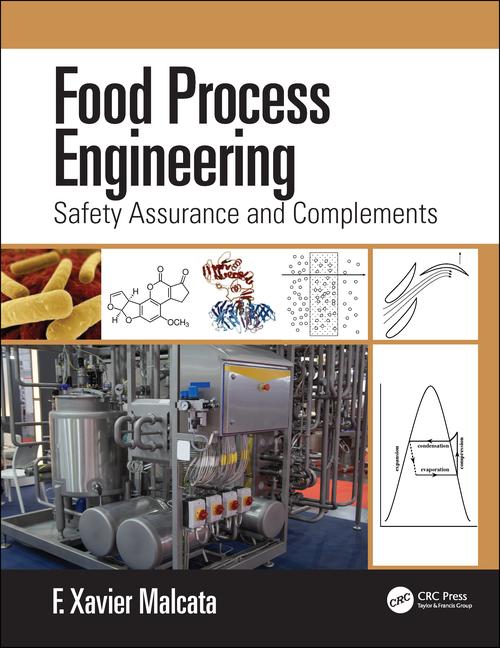Flexibility, safety, sustainability dominate Interpack 2011
Held May 12-18 in Düsseldorf, Germany, the triennial exhibition featured innovations that packed a punch.

If anyone needed reassurance the recession is nearing its end, a visit to Interpack 2011 would certainly have done the trick. With 2,700 exhibitors from 60 countries, the 19 halls of Messe Düsseldorf were packed with visitors all seven days of the shows. Not only were the visitors of high caliber (75 percent of the 166,000 visitors were decision-makers), they had dollars and euros to spend.
Automation supplier Gerhard Schubert displayed what it calls the world’s first packaging machine featuring fully automatic tool changing. The equipment can easily be changed to work with different products, and two layers can be handled at one time.
“From chocolate Easter bunnies to yogurt cups, the changeover time is only 4.5 minutes,” says Managing Director Gerhard Schubert. “It’s a decisive step toward the ideal of digital production, which responds immediately and flexibly to changed conditions.”
Flexibility was also a theme at Sealpac. The company presented Duo tooling seals, which seal two different formats in one operation. “What makes the concept unique is that it will seal two different packs with two different heights and shapes at the same time,” says Marcel Veenstra, marketing and communications manager, of SEALPAC. Each can be used separately, too: By means of a handle, each tooling can be activated or deactivated, so the two formats can be produced simultaneously or one after the other. The concept is suitable for multi-component packs such as ready meals or snacks.
Environmental issues were prominent at Interpack, and materials to meet the demands for reliability, protection and sustainability were in abundance. With bioplastics reportedly set to pass the one million ton mark this year globally, according to industry association European Bioplastics, this topic was on many visitors’ minds. According to Hasso von Pogrell, managing director of European Bioplastics, Interpack was an outstanding stage for presenting innovative packaging materials. “By presenting the new Danone Activia yogurt cup made of PLA bioplastics, we have been able to reach a whole new group of customers overnight, and bioplastics have finally crossed the consumer threshold. We are expecting production capacities to more than double over the next five years.”

Another innovation on display was the incorporation of a spoon in the top of the lid of baby food powder cans to prevent contamination when scooping out the powder. After use, the spoon is held in the lid’s rim so consumers don’t have to put their hand in to fish it out.
Among the new launches from Avery Dennison were a pressure-sensitive, one-way valve for high-speed application and shrink PS labels for meat and dairy applications. The Flexis Air valve thoroughly de-gasses packaged coffee, and can be applied using automatic label application systems at speeds nearly twice those of injection-molded, heat seal-applied valves, explains Marcel Coté, business development manager, label and packaging materials for Avery Dennison.
In addition, the company’s new shrink PS labels are said to offer superior visual appeal, while saving costs. The patent-pending product is engineered to survive vacuum-shrinking without wrinkling. The labels can be applied on- or off-line prior to filling and vacuum sealing. “Compared with traditional shrink-bag labeling, the Shrink PS solution offers enhanced labeling flexibility and the opportunity to differentiate product at a later stage in the packaging process. As a result, food processors can reduce or eliminate multiple sets of pre-printed shrink bags in inventory, cutting overall costs,” says Coté.

Following these findings, food companies and suppliers have rushed to find solutions. This was evident at Interpack where, for example, ink manufacturer Siegwerk displayed a vegetable-based ink, which is non-toxic even if migration occurs.
Alcohol-based ink is another alternative. It is used in a new product from REA and inkjet print head manufacturer Trident. To prevent blockages, patented sub-pulse technology agitates the ink but does not eject it, allowing the print head to clean it in periods of inactivity. The printer can coat porous and non-porous surfaces. “Traditional ink won’t dry on a non-porous surface,” explains Reto Heil, head of marketing, coding and marking systems at REA. “Traditional wax-based inks sit on the surface of the pack, so if there is any rubbing or heat involved, you can get smearing. With barcodes, it is particularly important that this does not happen. This is an entirely new alternative.”
The piezo printer can be used for high-resolution printing of logos, graphics and barcodes in heights up to 50mm x 100mm. Cott Beverages is currently using the printer, and trials are beginning in Europe.
For more information:
Gerhard Schubert, Schubert, 49 7111 16446 16, info@gerhard-schubert.de
Marcel Veenstra, SEalpaC, 31 341 46 20 30, marcel.veenstra@sealpacinternational.com
Hasso von Pogrell, European Bioplastics, 49 30 28482 350, pogrell@european-bioplatics.org
Woep Muller, ardagh Group, 31 570 682 168, woep.moller@ardaghgroup.com
Marcel Coté, avery Dennison, 61 3 9271 0648, marcel.cote@ap.averydennison.com
Christoph Thünemann, Siegwerk, 49 2241 304 732, chrisoph.thuenenmann@siegwerk.com
Reto M. Heil, REa Jet, 49 6154 638 1122, rheil@rea.de
Des O’Neil, Trident, 353 1 8014005, doneill@trident-itw.com

For loading two layers of products, the TLM machine positions the upper citrus juice bottles upside down in between the spaces of the first layer. Source: Gerhard Schubert.
If anyone needed reassurance the recession is nearing its end, a visit to Interpack 2011 would certainly have done the trick. With 2,700 exhibitors from 60 countries, the 19 halls of Messe Düsseldorf were packed with visitors all seven days of the shows. Not only were the visitors of high caliber (75 percent of the 166,000 visitors were decision-makers), they had dollars and euros to spend.
Automation supplier Gerhard Schubert displayed what it calls the world’s first packaging machine featuring fully automatic tool changing. The equipment can easily be changed to work with different products, and two layers can be handled at one time.
“From chocolate Easter bunnies to yogurt cups, the changeover time is only 4.5 minutes,” says Managing Director Gerhard Schubert. “It’s a decisive step toward the ideal of digital production, which responds immediately and flexibly to changed conditions.”
Flexibility was also a theme at Sealpac. The company presented Duo tooling seals, which seal two different formats in one operation. “What makes the concept unique is that it will seal two different packs with two different heights and shapes at the same time,” says Marcel Veenstra, marketing and communications manager, of SEALPAC. Each can be used separately, too: By means of a handle, each tooling can be activated or deactivated, so the two formats can be produced simultaneously or one after the other. The concept is suitable for multi-component packs such as ready meals or snacks.
Environmental issues were prominent at Interpack, and materials to meet the demands for reliability, protection and sustainability were in abundance. With bioplastics reportedly set to pass the one million ton mark this year globally, according to industry association European Bioplastics, this topic was on many visitors’ minds. According to Hasso von Pogrell, managing director of European Bioplastics, Interpack was an outstanding stage for presenting innovative packaging materials. “By presenting the new Danone Activia yogurt cup made of PLA bioplastics, we have been able to reach a whole new group of customers overnight, and bioplastics have finally crossed the consumer threshold. We are expecting production capacities to more than double over the next five years.”

SEALPAC presented Duo tooling seals at Interpack. They can seal two different packs with two different heights and shapes at the same time. Source: SEALPAC.
Sustainable and clever
There were plenty of other innovations at Interpack. For example, Ardagh, which bought the metal packaging group Impress, demonstrated the OptiLift, a new ring-pull for cans to overcome the “broken fingernail” problem when consumers try to grasp the ring. Woep Muller, group commercial director with Ardagh, explains how it works: “A flex panel does the trick: It is convex during seaming and becomes concave after sterilization due to the creation of a vacuum. Concavity is reached automatically without the need for mechanical manipulation.” In addition, material savings of up to 10 percent contribute to its sustainable credentials. “The vacuum trick is new, and customers love it,” says Muller. “We’re going to change all our lines by the end of the year to incorporate the OptiLift.”Another innovation on display was the incorporation of a spoon in the top of the lid of baby food powder cans to prevent contamination when scooping out the powder. After use, the spoon is held in the lid’s rim so consumers don’t have to put their hand in to fish it out.
Among the new launches from Avery Dennison were a pressure-sensitive, one-way valve for high-speed application and shrink PS labels for meat and dairy applications. The Flexis Air valve thoroughly de-gasses packaged coffee, and can be applied using automatic label application systems at speeds nearly twice those of injection-molded, heat seal-applied valves, explains Marcel Coté, business development manager, label and packaging materials for Avery Dennison.
In addition, the company’s new shrink PS labels are said to offer superior visual appeal, while saving costs. The patent-pending product is engineered to survive vacuum-shrinking without wrinkling. The labels can be applied on- or off-line prior to filling and vacuum sealing. “Compared with traditional shrink-bag labeling, the Shrink PS solution offers enhanced labeling flexibility and the opportunity to differentiate product at a later stage in the packaging process. As a result, food processors can reduce or eliminate multiple sets of pre-printed shrink bags in inventory, cutting overall costs,” says Coté.

The new OptiLift ring pull from Ardagh makes can opening effortless. Source: Ardagh.
Migration issues
Ink migration in food packaging made mainstream media news coverage after government lab tests in Zurich found unacceptable levels of mineral oils in food packaging in, for example, cereal packages. Chemicals in these mineral oils have been linked to inflammation of internal organs and cancer. Recycled board containing newsprint was the culprit, but mineral oil migration in general has led companies such as Kellogg and Weetabix to take steps to reduce the amount of mineral oil in packaging.Following these findings, food companies and suppliers have rushed to find solutions. This was evident at Interpack where, for example, ink manufacturer Siegwerk displayed a vegetable-based ink, which is non-toxic even if migration occurs.
Alcohol-based ink is another alternative. It is used in a new product from REA and inkjet print head manufacturer Trident. To prevent blockages, patented sub-pulse technology agitates the ink but does not eject it, allowing the print head to clean it in periods of inactivity. The printer can coat porous and non-porous surfaces. “Traditional ink won’t dry on a non-porous surface,” explains Reto Heil, head of marketing, coding and marking systems at REA. “Traditional wax-based inks sit on the surface of the pack, so if there is any rubbing or heat involved, you can get smearing. With barcodes, it is particularly important that this does not happen. This is an entirely new alternative.”
The piezo printer can be used for high-resolution printing of logos, graphics and barcodes in heights up to 50mm x 100mm. Cott Beverages is currently using the printer, and trials are beginning in Europe.
For more information:
Gerhard Schubert, Schubert, 49 7111 16446 16, info@gerhard-schubert.de
Marcel Veenstra, SEalpaC, 31 341 46 20 30, marcel.veenstra@sealpacinternational.com
Hasso von Pogrell, European Bioplastics, 49 30 28482 350, pogrell@european-bioplatics.org
Woep Muller, ardagh Group, 31 570 682 168, woep.moller@ardaghgroup.com
Marcel Coté, avery Dennison, 61 3 9271 0648, marcel.cote@ap.averydennison.com
Christoph Thünemann, Siegwerk, 49 2241 304 732, chrisoph.thuenenmann@siegwerk.com
Reto M. Heil, REa Jet, 49 6154 638 1122, rheil@rea.de
Des O’Neil, Trident, 353 1 8014005, doneill@trident-itw.com
Looking for a reprint of this article?
From high-res PDFs to custom plaques, order your copy today!






